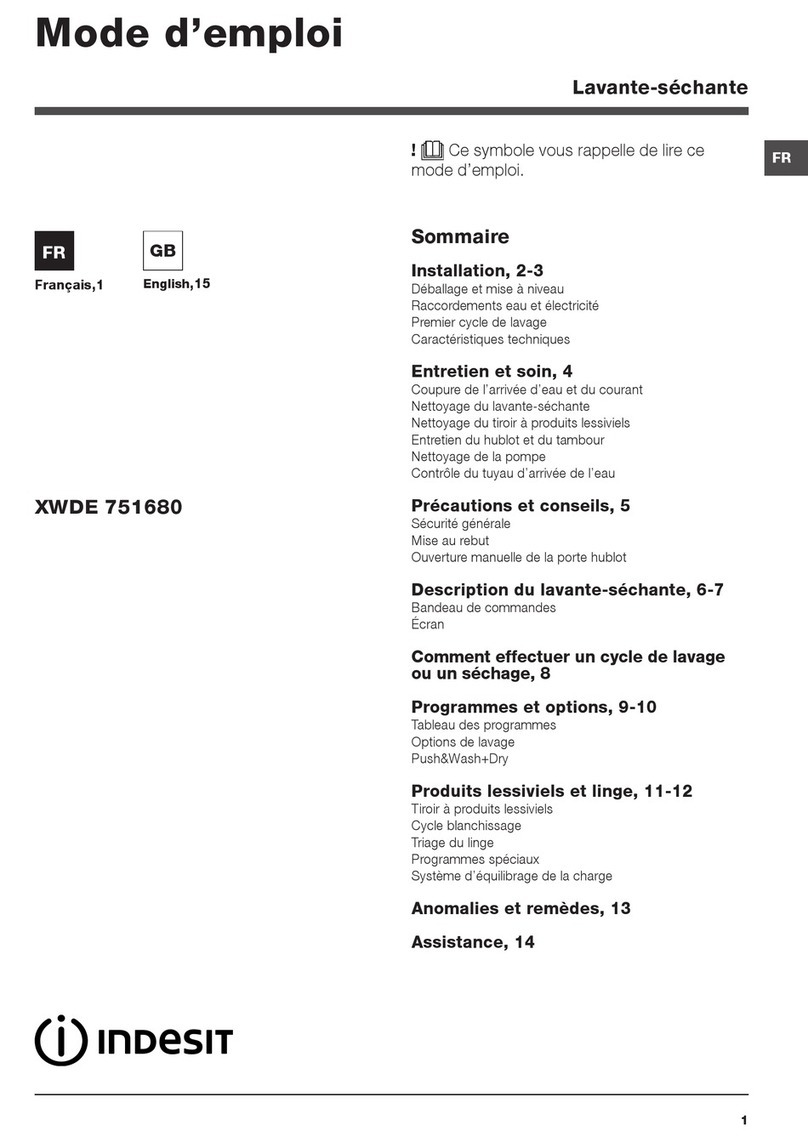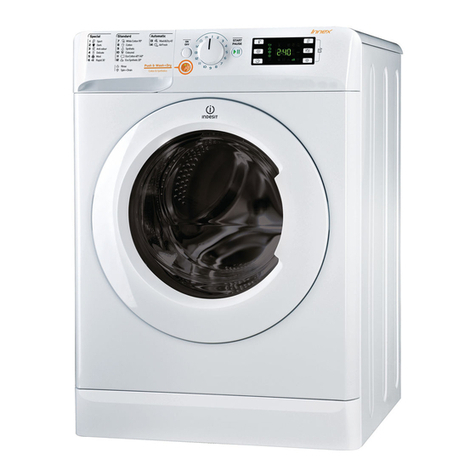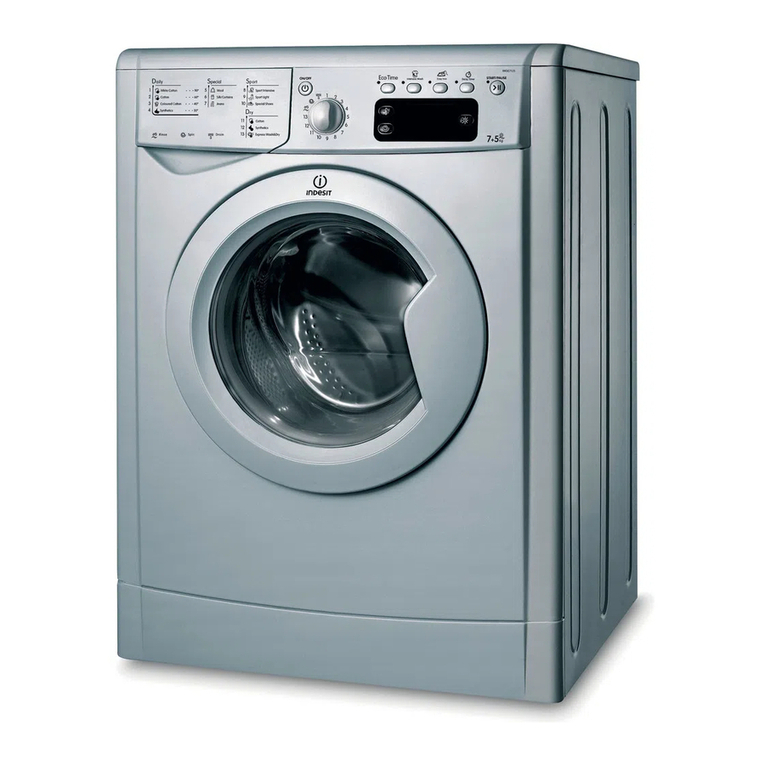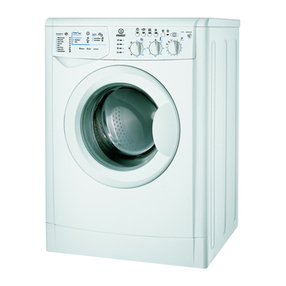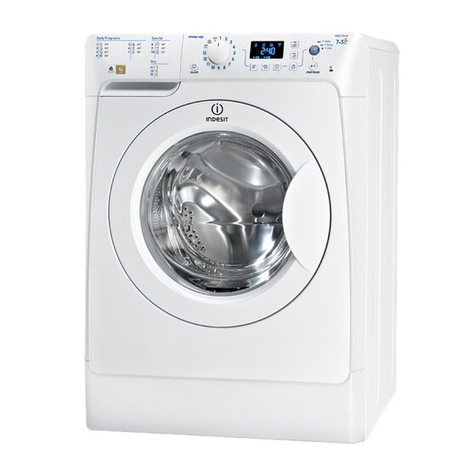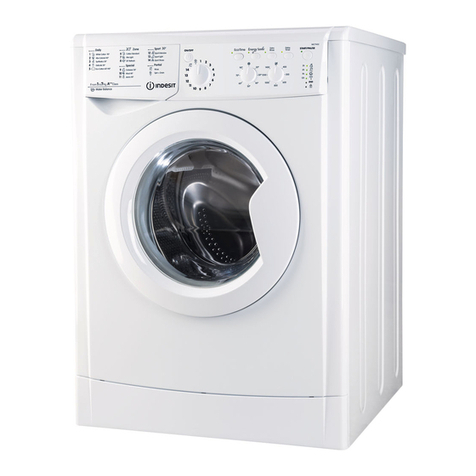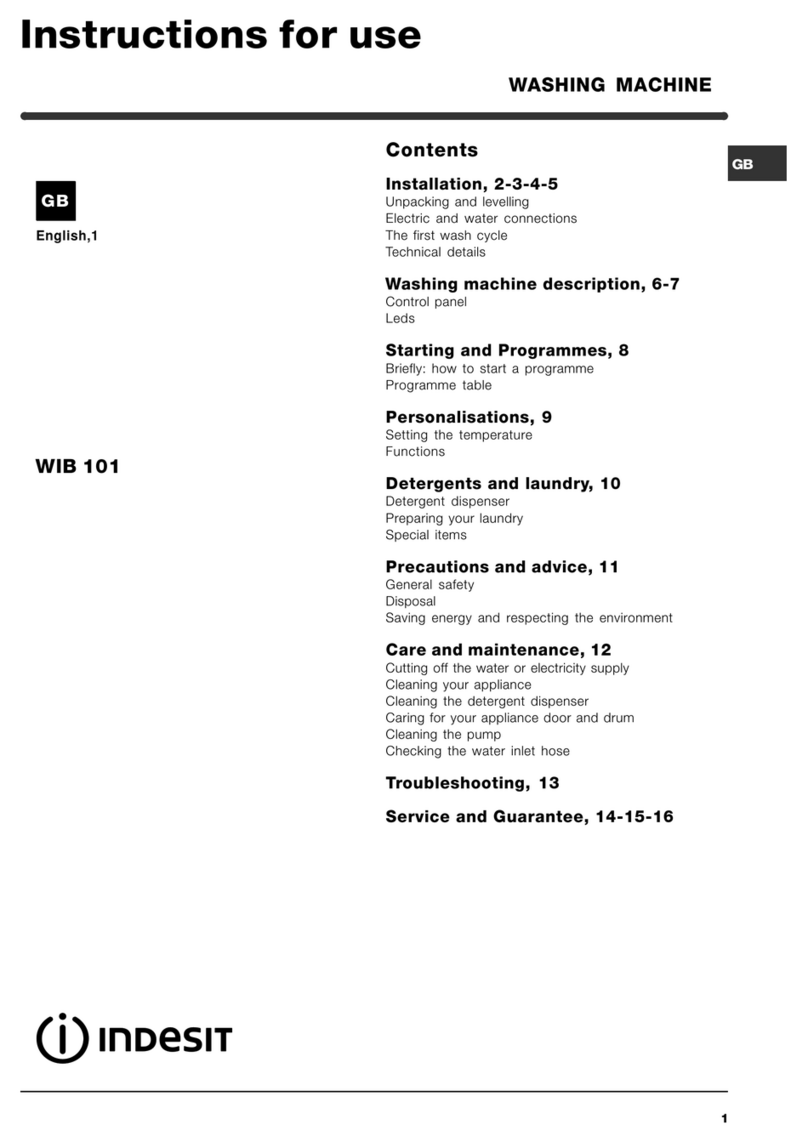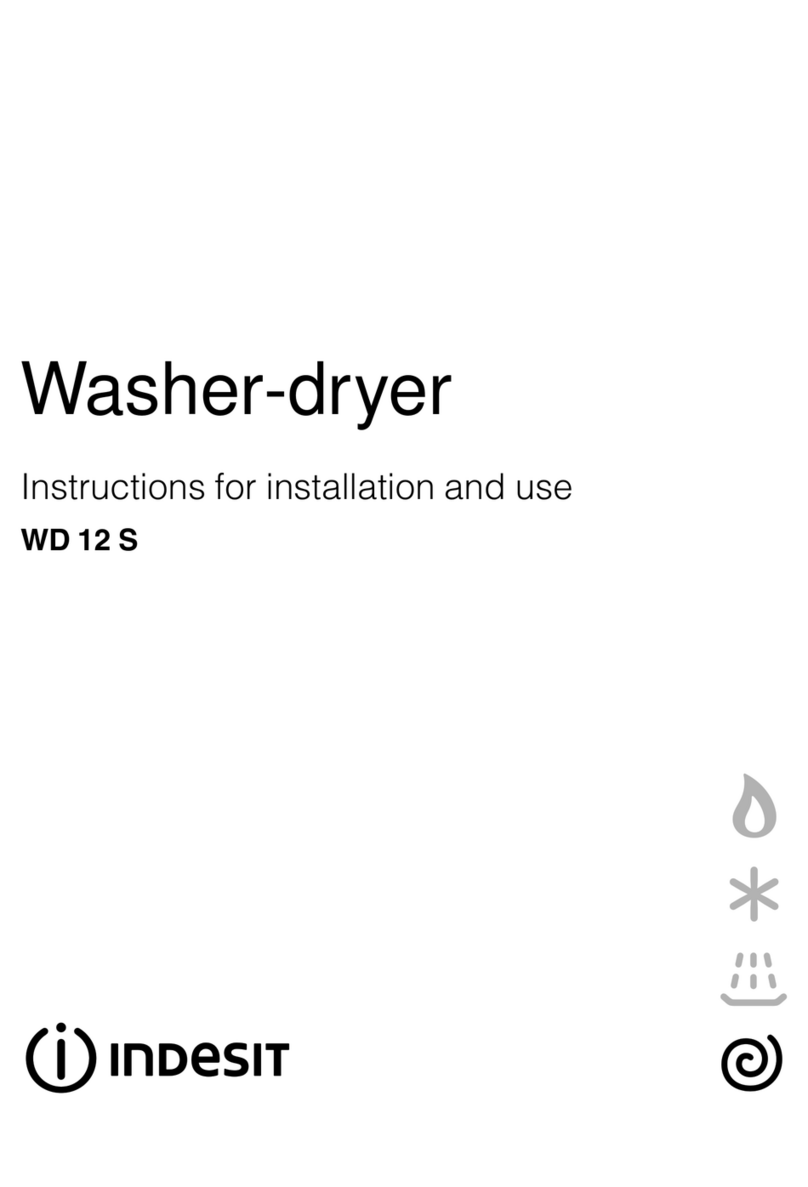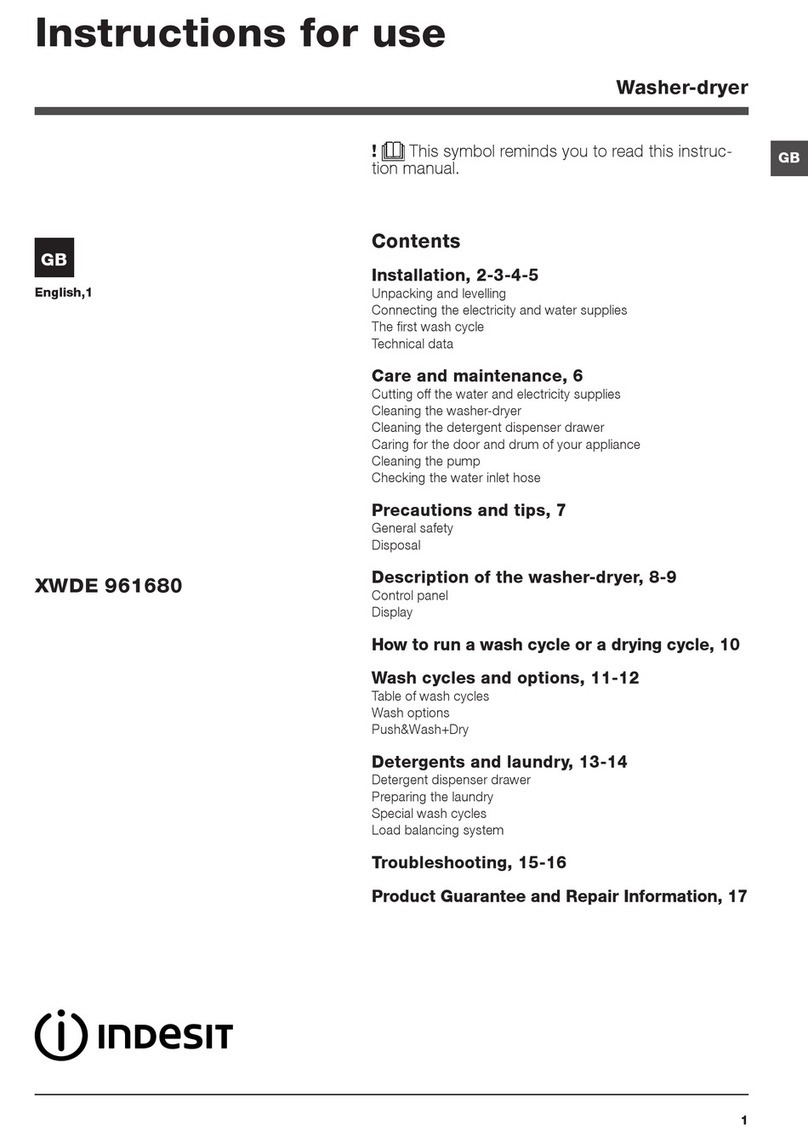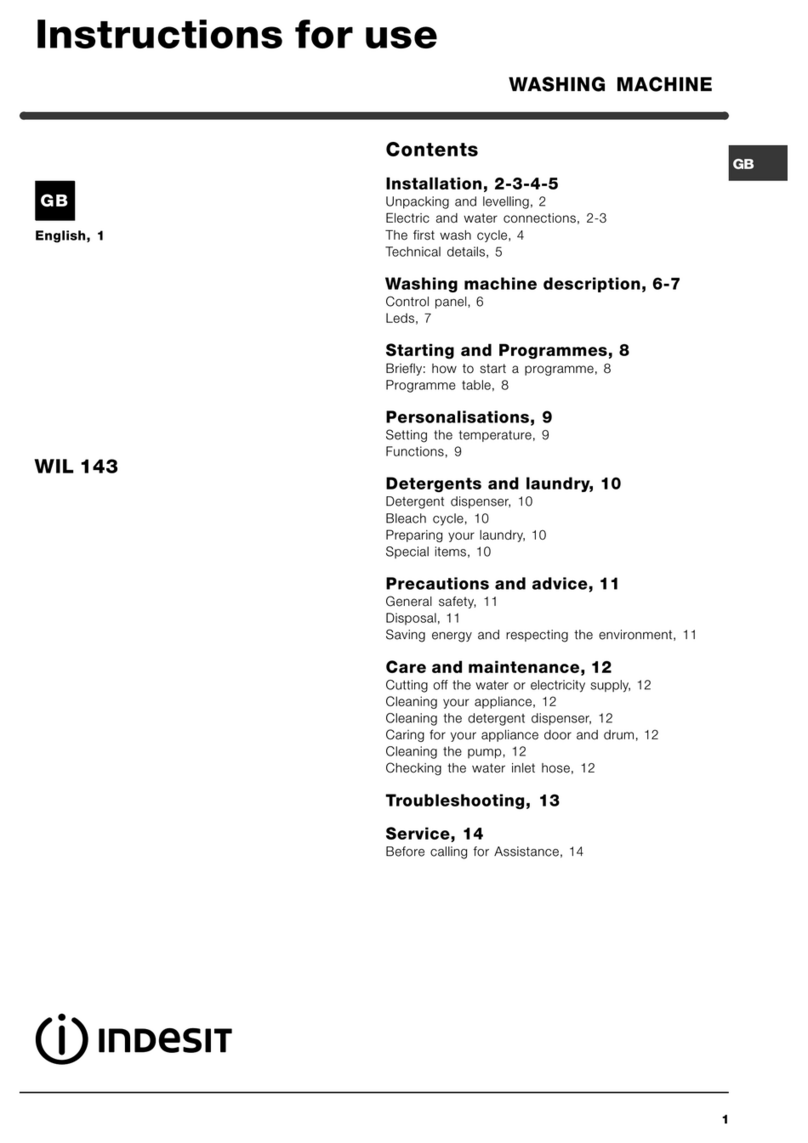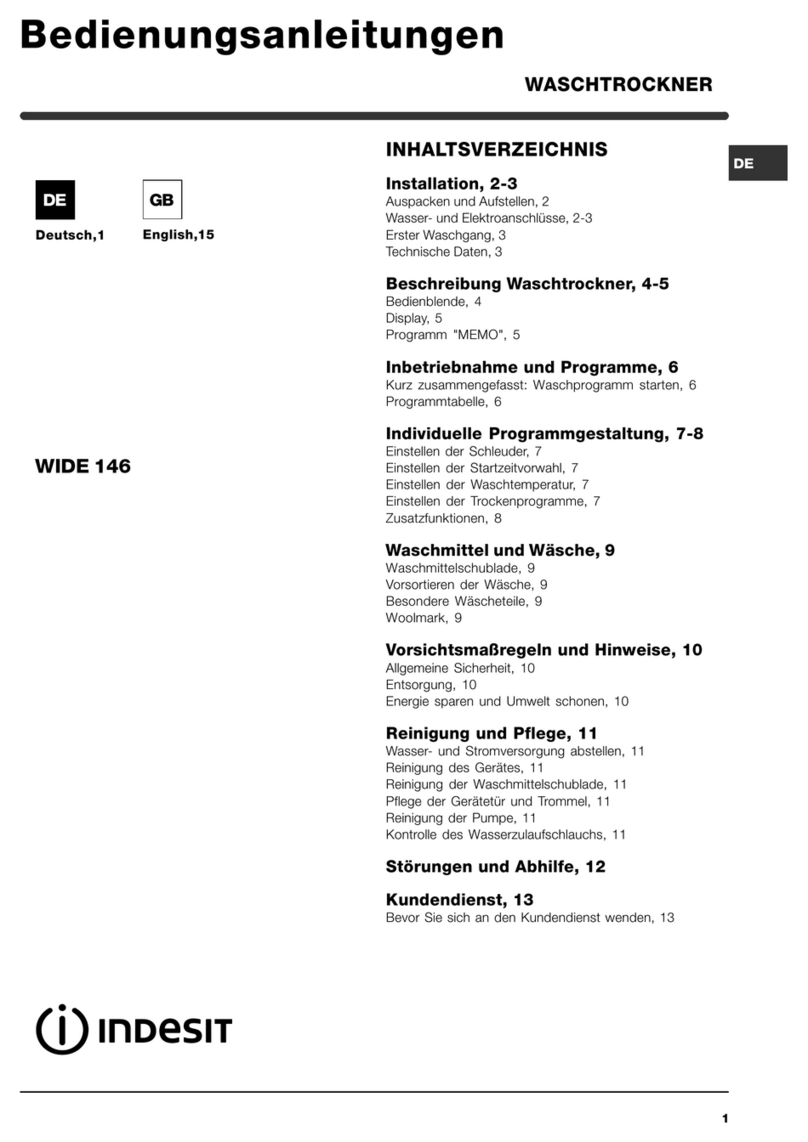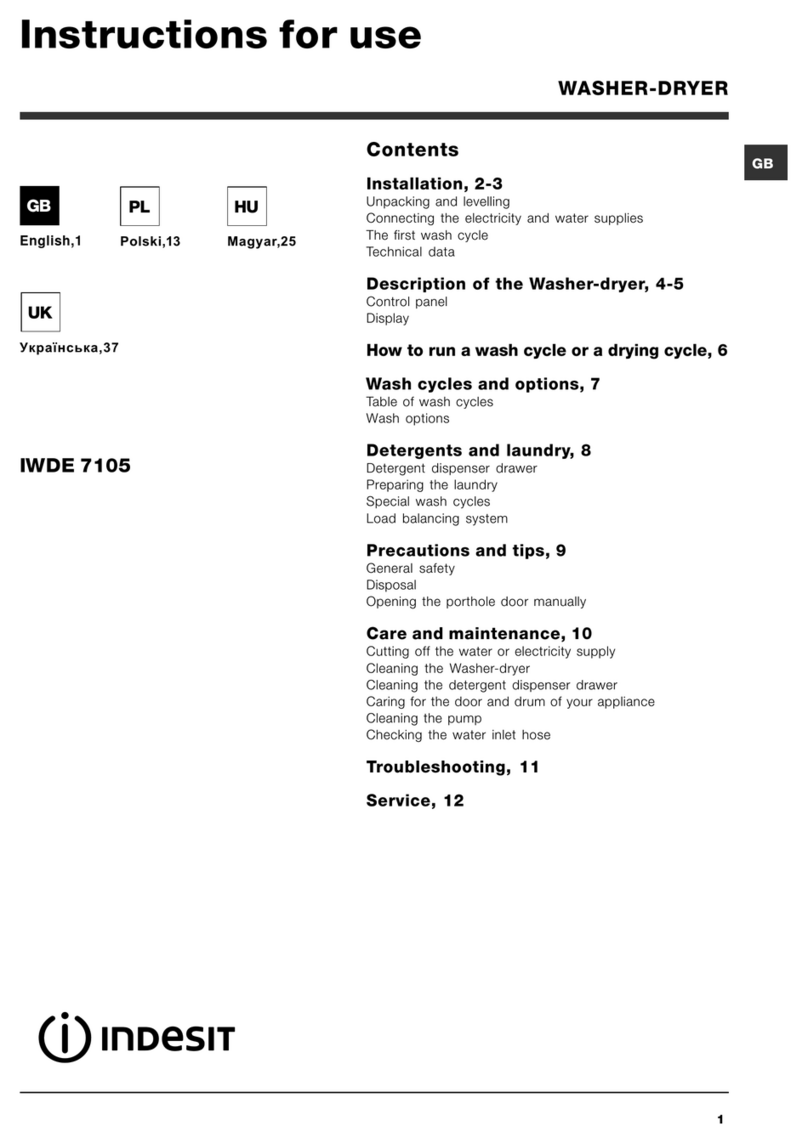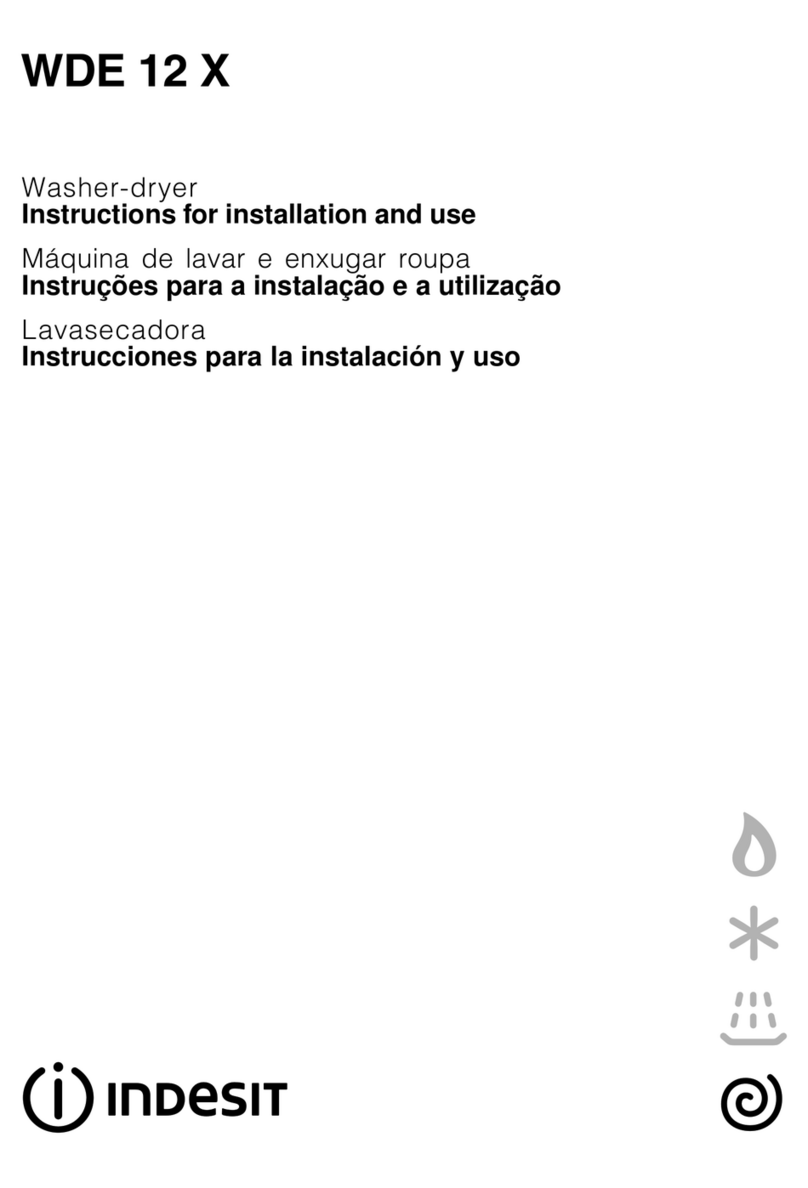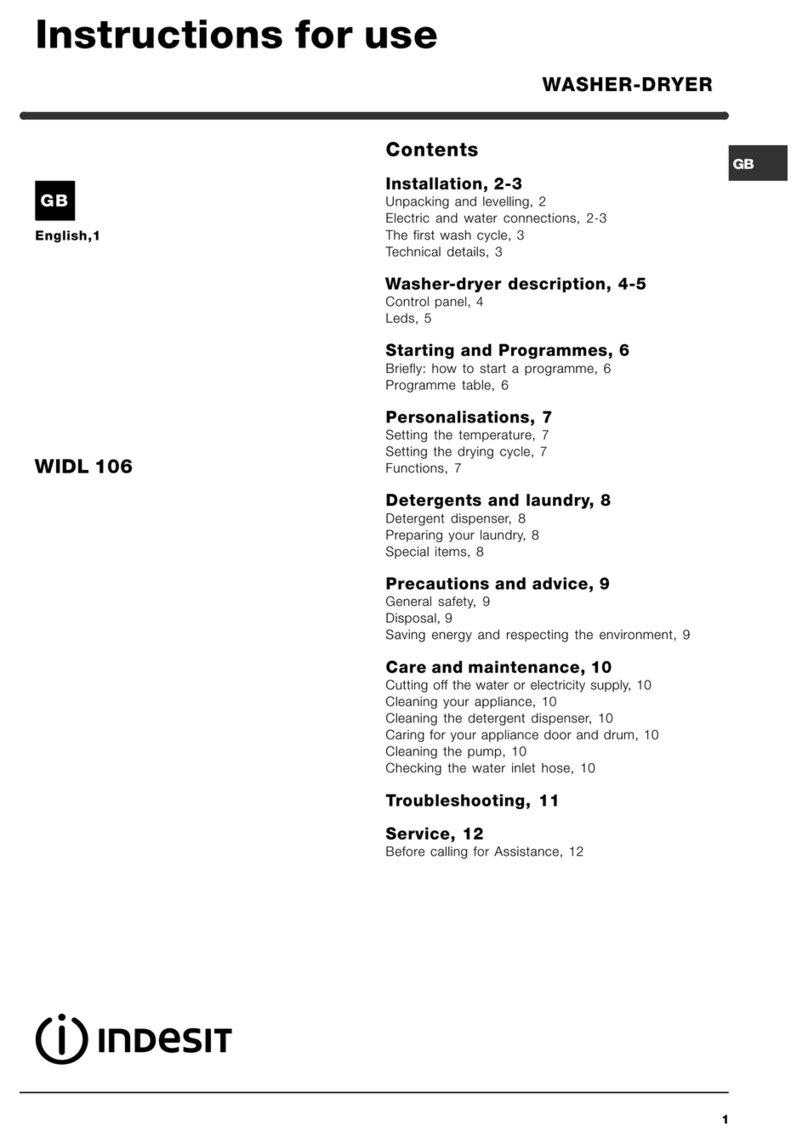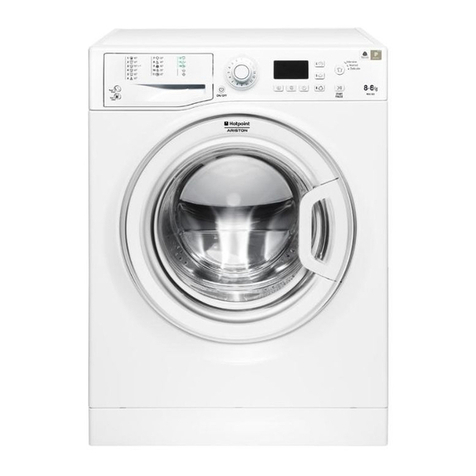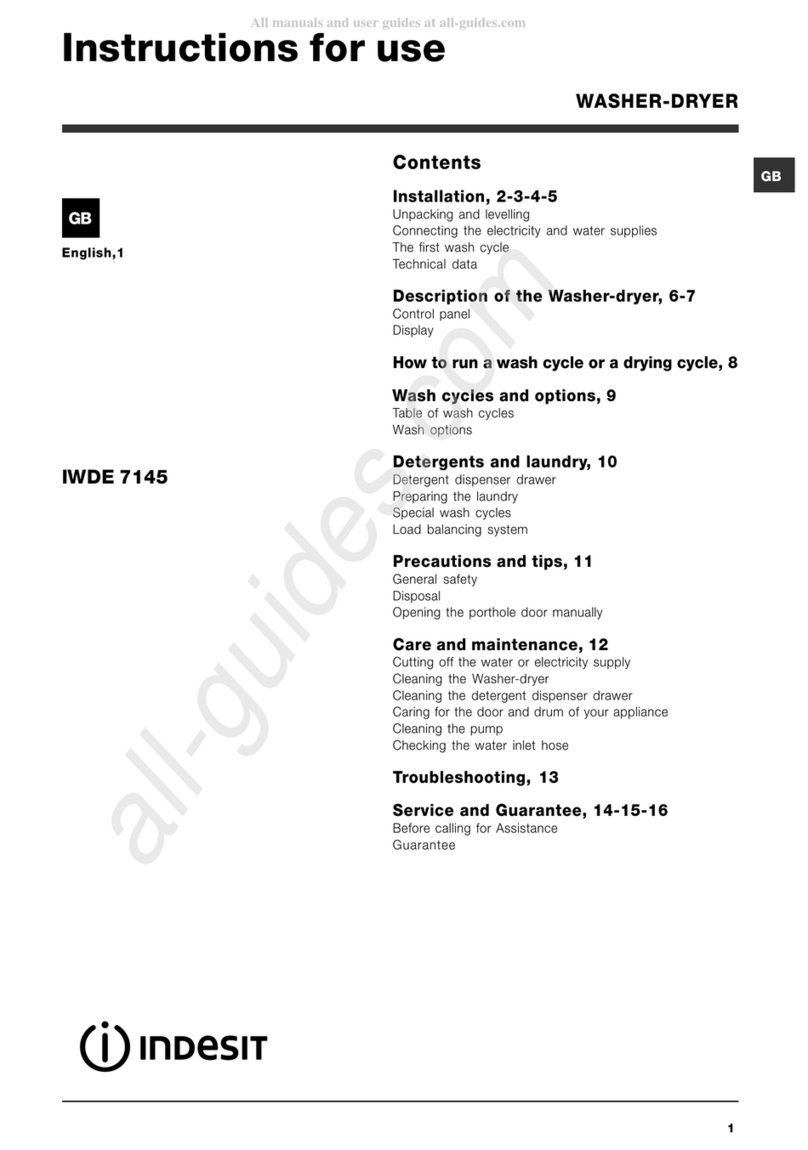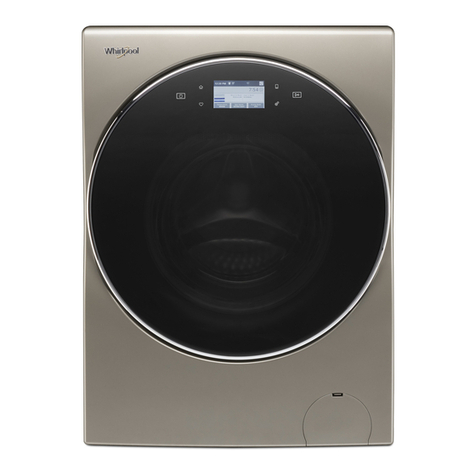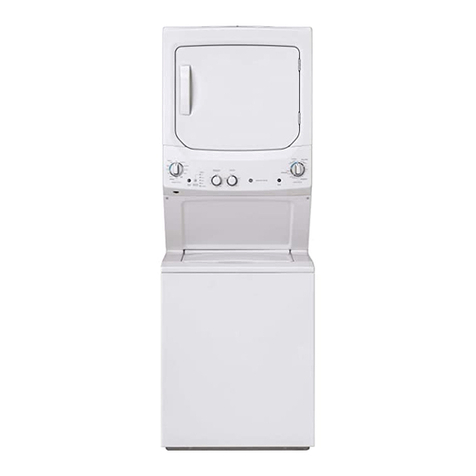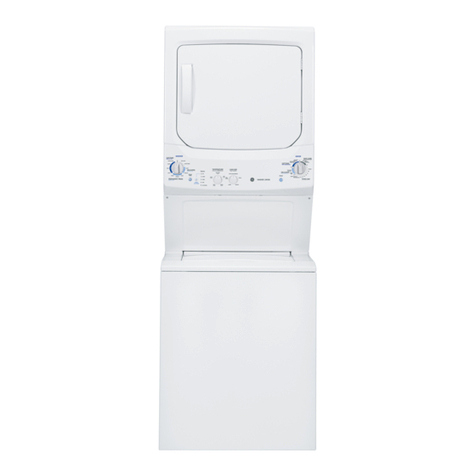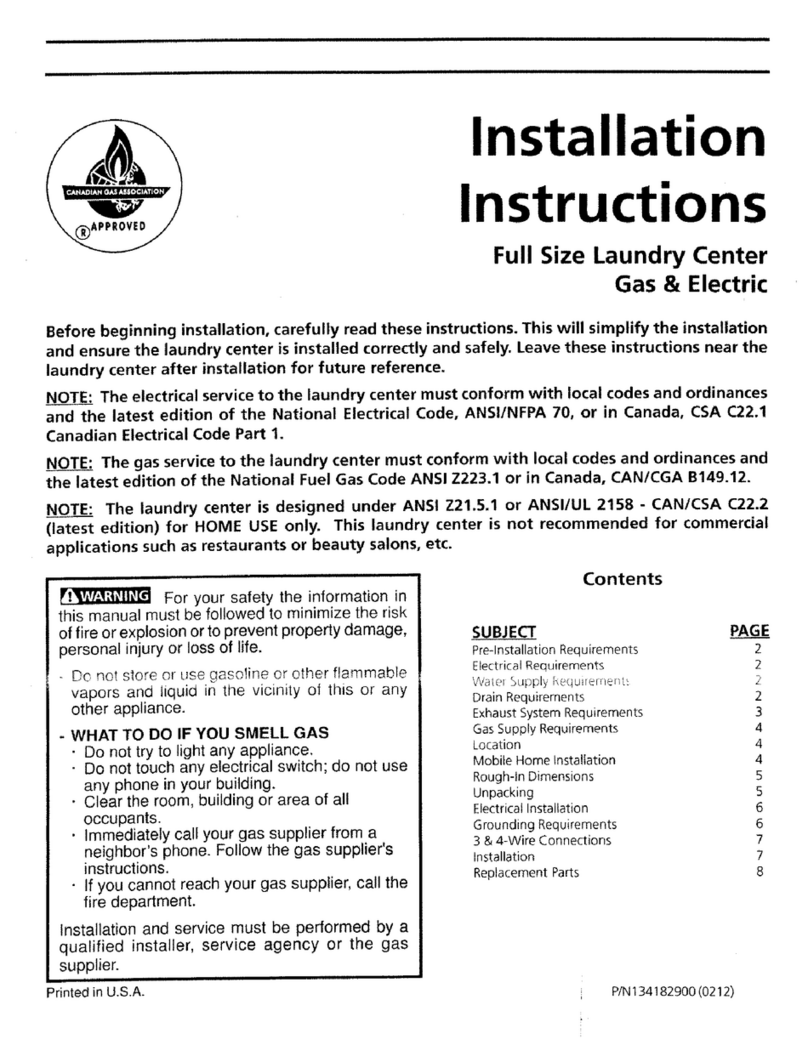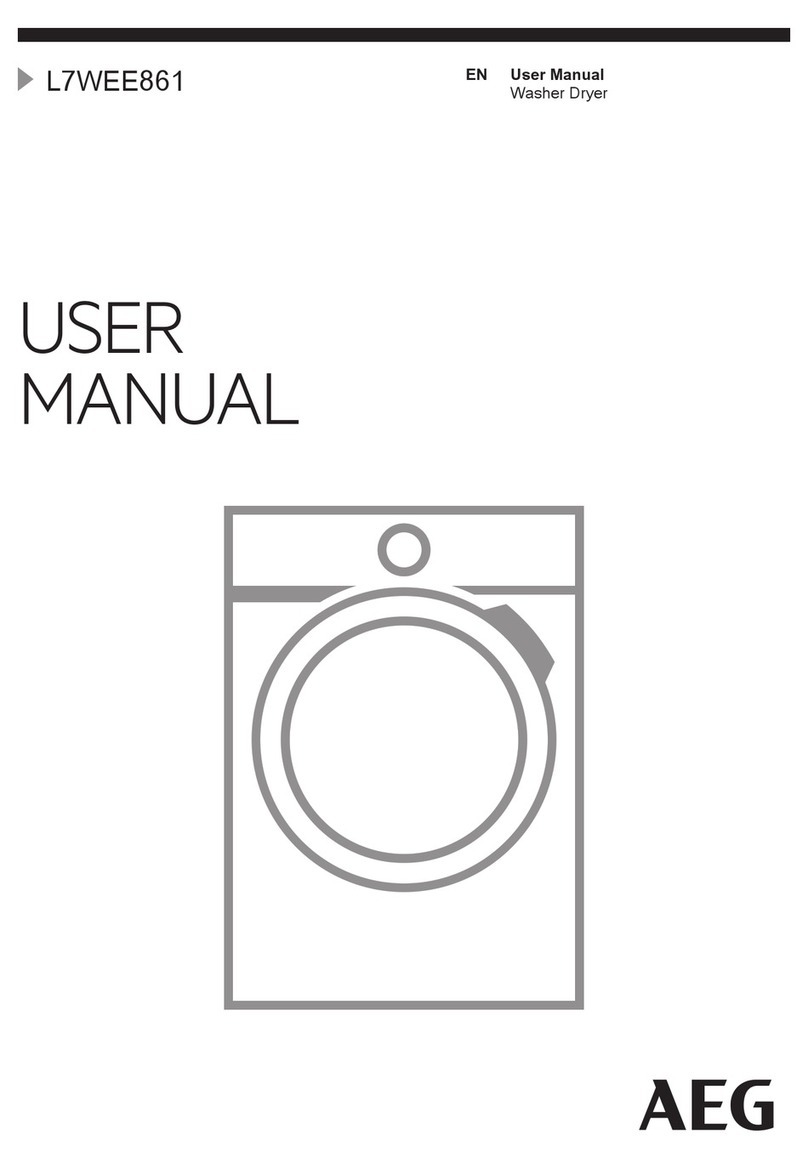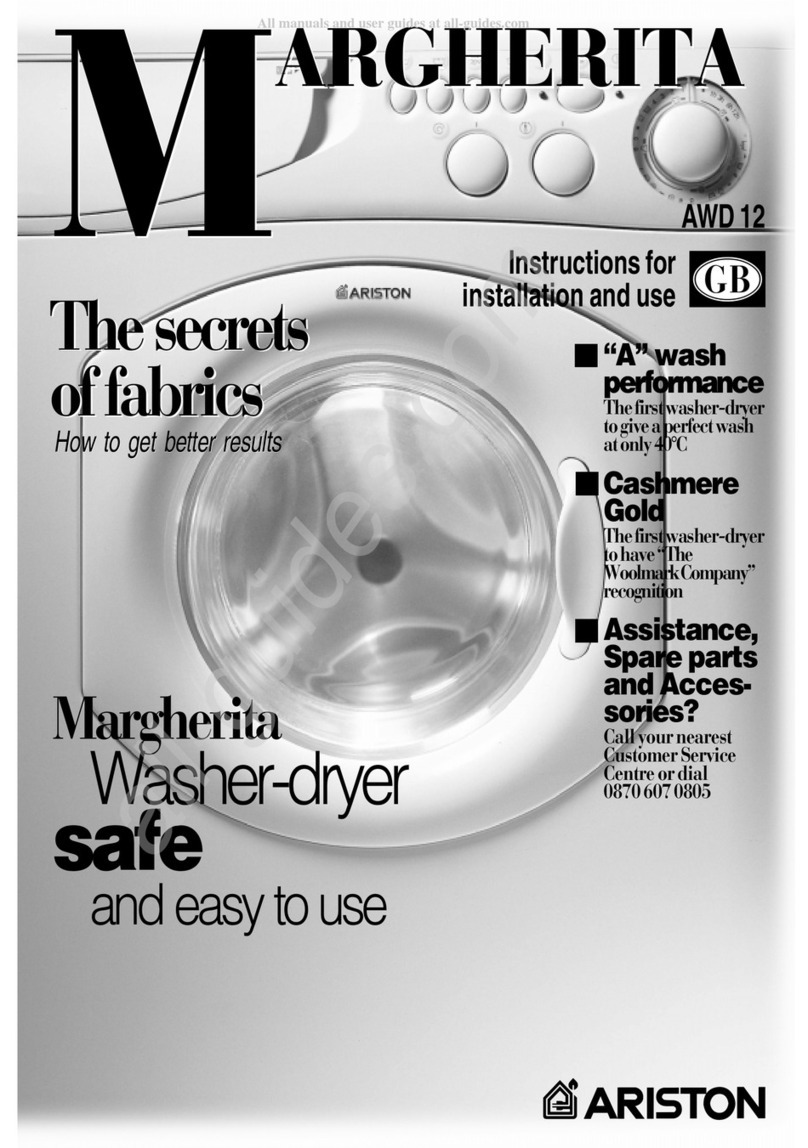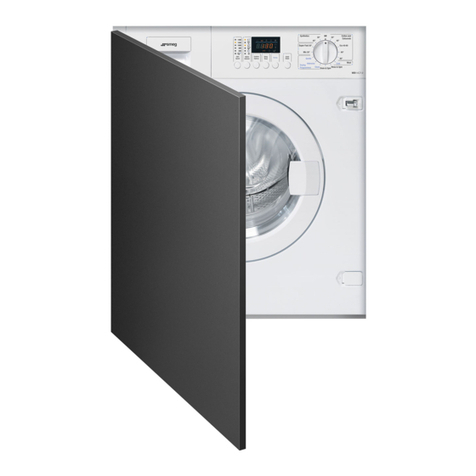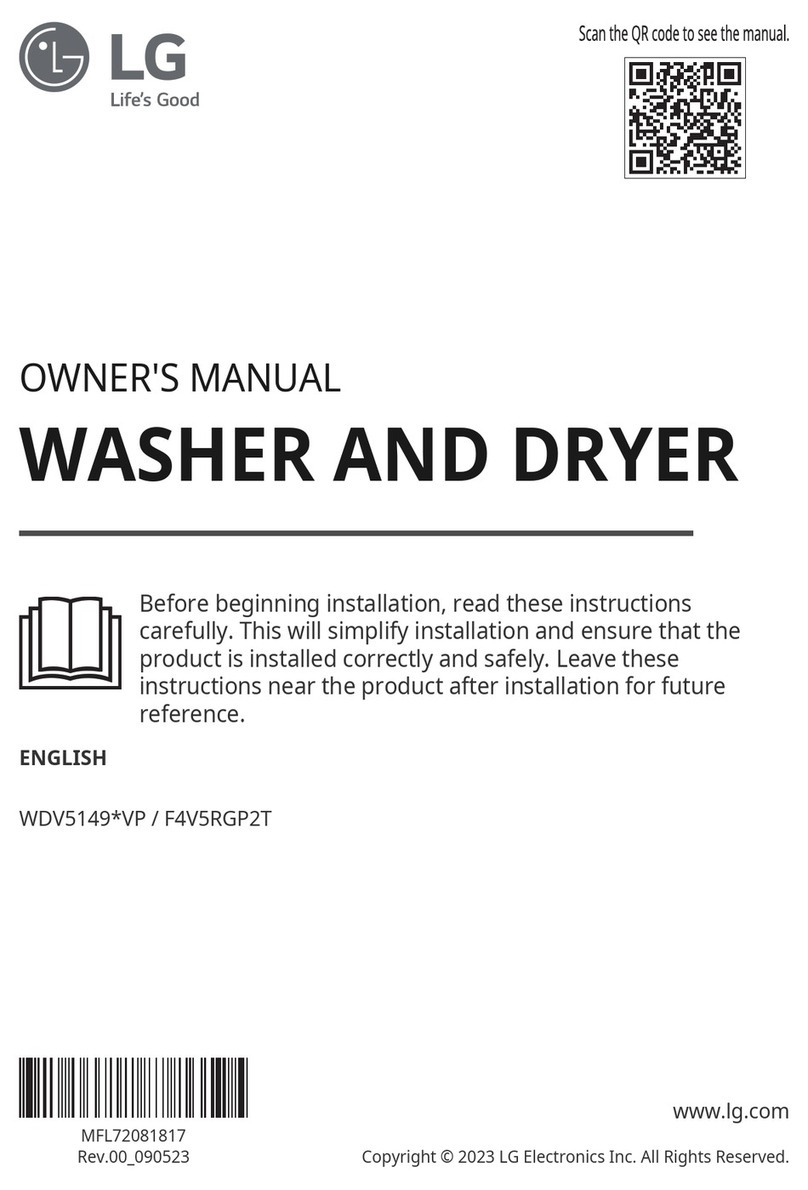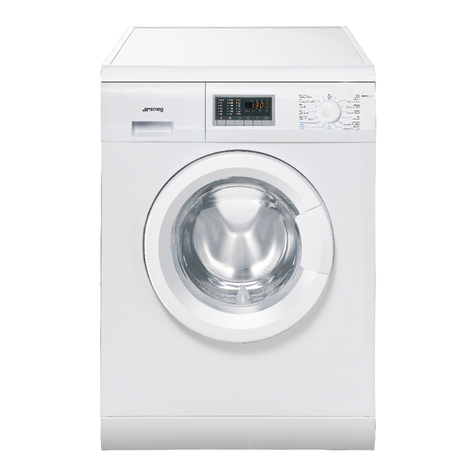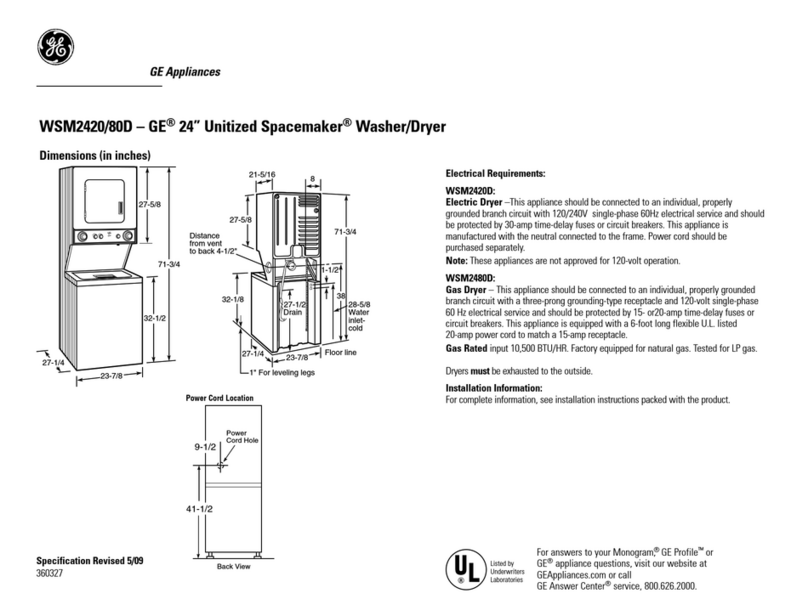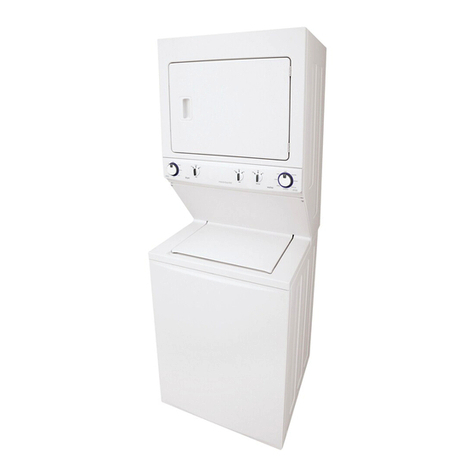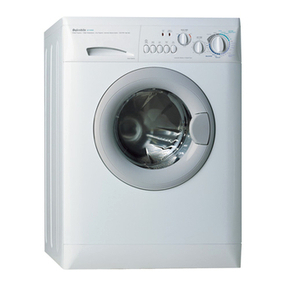10
GB
Type of fabric and
degree of soil Program. Te m p e -
rature
rying
Cycle
etergent Fabric
softener
Cycle
length
(minutes)
escription of wash cycle
pre-
wash wash
Standard
Cotton: Extremely soiled whites
(sheets, ta lecloths, etc.) 190°C 155 Pre-wash, wash cycle, rinse cycles,
intermediate and final spin cycles
Cotton: Extremely soiled whites
(sheets, ta lecloths, etc.) 290°C -150 Wash cycle, rinse cycles,
intermediate and final spin cycles
Cotton: Heavily soiled whites and
fast colours 260°C -140 Wash cycle, rinse cycles,
intermediate and final spin cycles
Cotton: Heavily soiled whites and
delicate colours 240°C -125 Wash cycle, rinse cycles,
intermediate and final spin cycles
Cotton: Slightly soiled whites and
delicate colours (shirts, jumpers, etc.) 340°C - 85 Wash cycle, rinse cycles,
intermediate and final spin cycles
Synthetics: Heavily soiled fast
colours ( a y linen, etc.) 450°C - 83 Wash cycle, rinse cycles, anti-crease
or delicate spin cycle
Synthetics: Heavily soiled fast
colours ( a y linen, etc.) 440°C - 70 Wash cycle, rinse cycles, anti-crease
or delicate spin cycle
Wool 540°C --
50 Wash cycle, rinse cyclese, delicate
spin cycle
Very delicate fa rics
(curtains, silk, viscose, etc.) 630°C --
45 Wash cycle, rinse cycles, anti-crease
or draining cycle
Drying cotton 7--- - -
Drying delicates 8--- - -
Tim e 4 you
Cotton: Heavily soiled whites and
fast colours 960°C --
60 Wash cycle, rinse cycles,
intermediate and final spin cycles
Synthetics: Delicate colours
(all types of slightly soiled garments) 10 40°C --
40 Wash cycle, rinse cycles, delicate
spin cycle
Synthetics: Delicate colours
(all types of slightly soiled garments) 11 30°C - 30
Wash cycle, rinse cycles and delicate
spin cycle
Sport
Sports shoes (MAX. 2 pairs) 12 30°C --
50
Cold wash (without detergents), wash
cycle, rinse cycles, and delicate spin cycle
Fa rics for sportswear
(Tracksuits, shorts, etc.) 13 30°C --
60
Wash cycle, rinse cycles,
intermediate and final spin cycles
PARTIAL PROGRAMMES
Rinse --- -Rinse cycles and spin cycle
Spin cycle --- - -
Draining and spin cycle
Drain ----- -
Drain
Starting and Programmes
Programme table
Briefly: starting a programme
1. Switch the Washer-dryer on y pressing utton .
All the LEDS will light up for a few seconds and
the ON-OFF/DOOR LOCK Led will egin to flash.
2. Load your laundry into the washer-dryer and
shut the appliance door.
3. Set the PROGRAMME kno to the programme
required.
4. Set the wash temperature (see page 11).
5. Set the drying cycle if necessary (see page 11).
6. Add the detergent and any fa ric softener (see page 12).
7. Start he programme y pressing the START/RESET
utton.
To cancel it, keep the START/RESET utton pressed
for at least 2 seconds.
8. When the programme is finished, the ON-OFF/
DOOR LOCK Led will flash to indicate that the
appliance door can e opened. Take out your
laundry and leave the appliance door ajar to allow
the drum to dry thoroughly. Turn the Washer-dryer
off y pressing utton .
Notes
-For programme 9, we advise against exceeding a wash load of 3.5 kg.
-For programme 13 we advise against exceeding a wash load of 2 kg.
-For the anti-crease function: see Easy iron, opposite page. The information contained in the ta le is purely indicative.
Special programme
Daily (programme 11 for Synthetics) is designed to wash lightly soiled garments in a short amount of time: it only lasts
30 minutes and allows you to save on oth time and energy. By setting this programme (11 at 30°C), you can wash
different fa rics together (except for woollen and silk items), with a maximum load of 3 kg.
We recommend the use of liquid detergent.
